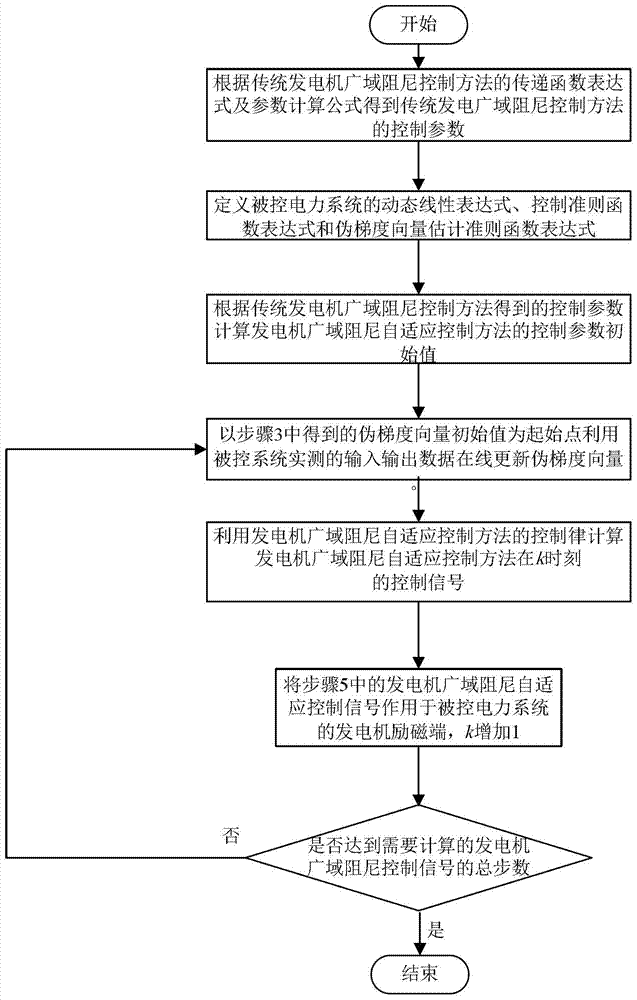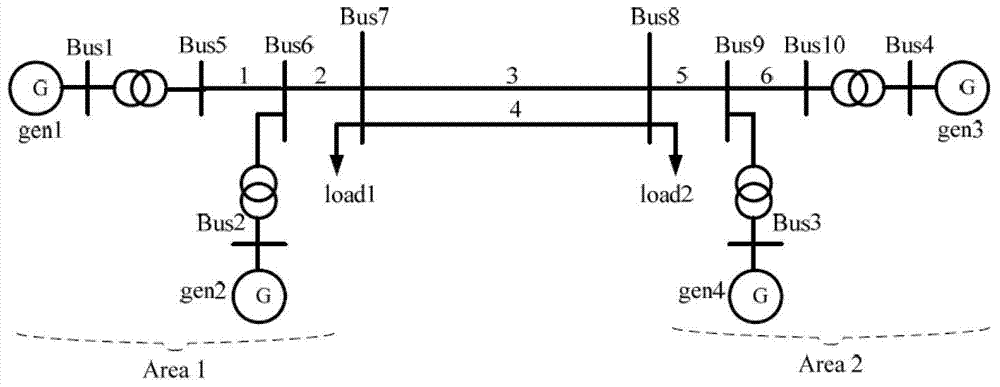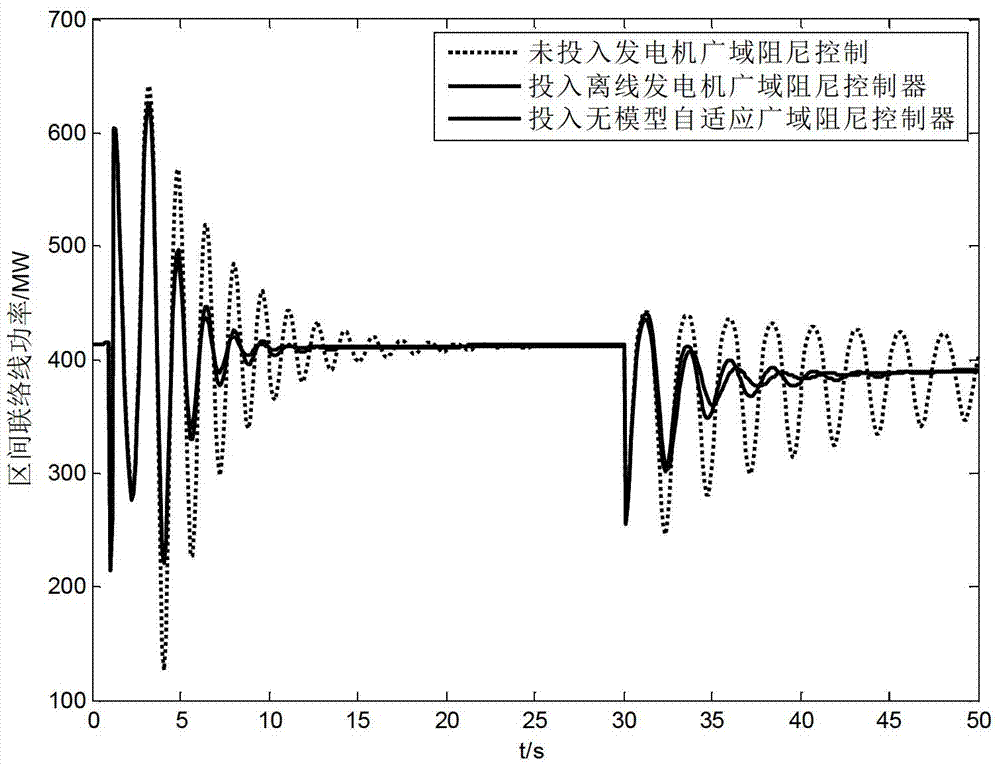Generator wide area damping control method based on model-free adaptive control algorithm
A model-free adaptive and self-adaptive control technology, applied in the direction of reducing/preventing power oscillation, etc., can solve the problems of large deviation and inability to guarantee the control effect, and achieve the effects of improving stability, avoiding modeling, and suppressing low-frequency oscillation
- Summary
- Abstract
- Description
- Claims
- Application Information
AI Technical Summary
Problems solved by technology
Method used
Image
Examples
Embodiment
[0094] Example: four-machine two-zone system
[0095] Taking the four-machine two-zone system as an example to illustrate the effectiveness of the above generator wide-area damping adaptive control method, the system structure is as follows: image 3 shown.
[0096] The system consists of two areas, area 1 and area 2, each area has two generators, the two areas are connected by the inter-area connection line 3, 4, and the inter-area transmission power is 413MW; the four generators in the system are exactly the same, The rated capacity is 900MW and the rated voltage is 20kV. The generator wide-area adaptive damping control is applied to the excitation end of the generator 4, and the wide-area feedback signal of the generator wide-area damping control is the bus frequency difference signal between area 2 and area 1.
[0097] In this embodiment, the generator wide-area damping adaptive control method for the above-mentioned four-machine two-zone system includes the following st...
PUM
 Login to View More
Login to View More Abstract
Description
Claims
Application Information
 Login to View More
Login to View More - R&D
- Intellectual Property
- Life Sciences
- Materials
- Tech Scout
- Unparalleled Data Quality
- Higher Quality Content
- 60% Fewer Hallucinations
Browse by: Latest US Patents, China's latest patents, Technical Efficacy Thesaurus, Application Domain, Technology Topic, Popular Technical Reports.
© 2025 PatSnap. All rights reserved.Legal|Privacy policy|Modern Slavery Act Transparency Statement|Sitemap|About US| Contact US: help@patsnap.com



